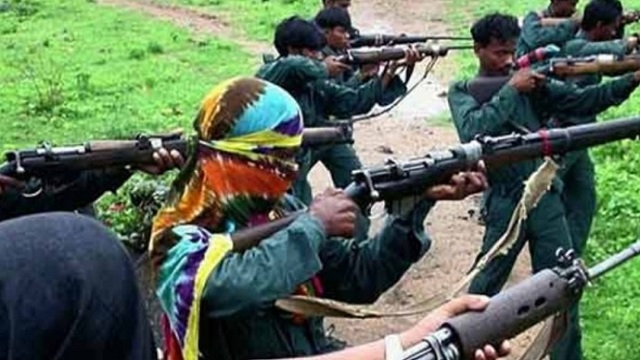Rise and fall of Naxal movement in Rayagada district of Odisha, watch
As of now while Mao menace has completely come to a halt in Rayagada district, many left wing extremists have surrendered and joined the mainstream of the society
Rayagada: The Naxal movement has come to a complete halt in the Rayagada district of Odisha. However, in the meanwhile many people including police personnel as well as innocent tribal have been killed by the Maoists. Also, a number of Naxalites have surrendered and entered to the mainstream of the society. They are now living a good life with peace. Of course, this long journey was not so smooth. Here is a reports on the rise and fall of Naxalite movement in Rayagada district of Odisha.
The Naxal movement started in the Naxalbari village of West Bengal in the mid-1960s. Soon, it hugely impacted in some areas of the South Odisha. Nagbhushan Patnaik and D. Bhubanmohan Patnaik took the lead of the Naxalite movement in various areas of the neighbouring Andhra Pradesh including Srikakulam and Vijaynagaram district as well as undivided Koraput and Gajapati districts in Odisha.
After the Naxal suppression in between1970 to 1995, this organization gradually expanded its tentacles towards the end of the nineties. The organization exhibited its presence in Rayagada, Gajapati, Malkangiri, Koraput and Nabarangpur districts. History has left behind many questions under what circumstances this Naxal oppression was reduced in Rayagada district.
There was a time when Naxal terror was rising in the Gothalpadar area of Rayagada district. Cheru Sahu was the first victim of Naxal bullets. Due to lack of knowledge of SOP in Naxal-dominated areas, initially 9 policemen were killed in Naxal landmine blasts. One Naxal incident after another not only shook Rayagada district but also the entire State.
On August 9, 1998 a high-level Naxal encounter was carried out in the Kapadangi hills of Irukubadi panchayat when a Grey-hound team of neighbouring Andhra Pradesh opened fire at the Naxals.
During the exchange of fire, 9 Naxal cadres and 4 Andhra Police were killed. Since then the Naxal organization grew like cancer. Naxals went on to kill politicians, contractors and even innocent tribal. Then, the state police was also unprepared for the Naxal encounter.
In December 29, 1999, Sabyasachi Panda, who was fighting for the land movement, led the Naxal movement. Naxalites tried to establish parallel governance in this area. They established ‘Praja Courts’ in the villages. Development came to a complete halt due to Naxal terror in this area. Naxal repression emerged as a challenge for the State authorities. Gradually, the police administration became active and developed the infrastructure to tackle Mao-menace. And there was a change in the quality of police stations.
Subsequently, directly and indirectly, there was a breakdown in the Naxal movement. The incidents of torture of women working in the Naxal organization and killing of innocent tribals created a split in the Naxal movement.
Gradually, the central and state governments came up with different plans. The development of administration along with police repression gradually weakened the Naxal movement in Rayagada.
Then, a number of Naxals were arrested while many of them also decided to surrender. Peace Army (Shanti Sena) was formed in Chandrapur area of Rayagada in the style of the Salwa Judum of Chhattisgarh to suppress the Naxals. However, after the murder of its leader Daku Majhi, the Shanti Sena movement weakened. Meanwhile many misguided Naxals returned to the social mainstream.
The state government launched the surrender and rehabilitation yojana for the left wing extremists on June 6, 2006. Then, as many as 19 districts of the state were Naxal affected. By 2010, the number of Naxals in the state reached 600.
Now only a little presence of Maoists can be felt in Rayagada district.
As many as 12 police personnel have been killed so far since 2002 by Maoists. The biggest incident took place at Gothal Padar when Policemen got trapped in Naxal ambush. In this incident, seven policemen were killed in Naxal landmine blast.
Similarly, landlords and common people also became victims of Naxal bullets. As many as 25 such people were killed by Naxals. Among them was Jajati Sahu, general secretary of BJD. He was dragged out of his house and murdered on 26 October 2002.
Later, Police arrested 18 Naxals from various places. As per reports, so far 29 Naxalites have surrendered and joined the mainstream of the society.
In 2009, after the surrender of Naxal commander Ghasīram Samutika alias Ghasīram Majhī alias Akash, the Naxal stronghold gradually collapsed in this district. During this two-decade period, 19 Naxals were killed in police bullets. As of now there is a complete end to the Naxal movement in Rayagada district.
Report: Amulyaratna Sahu, Rayagada




 Ms Kalinga
Ms Kalinga